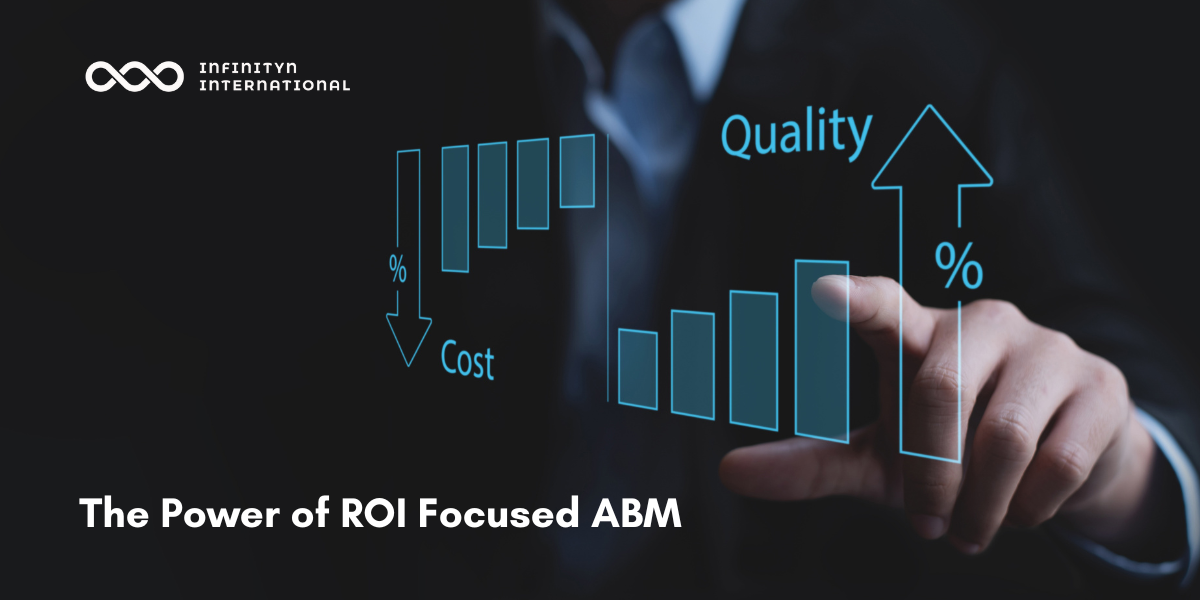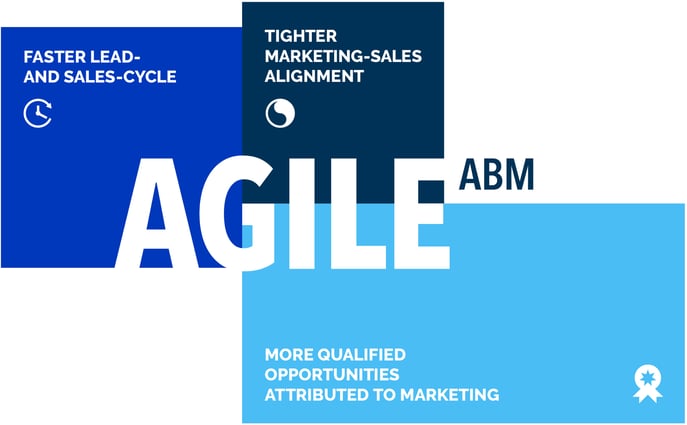Overcoming Sales Buy-In Challenges and Managing Organizational Change in Account-Based Marketing
Amidst the constantly shifting terrain of contemporary marketing, the concept of Account-Based Marketing (ABM) has emerged as a game-changer for...
4 min read
 Kate Varvedo
:
Apr 11, 2024 6:28:26 AM
Kate Varvedo
:
Apr 11, 2024 6:28:26 AM

In the ever-evolving marketing strategies, Account-Based Marketing (ABM) has emerged as a powerful approach that focuses on targeting specific high-value accounts rather than casting a wide net to attract leads. But what exactly is ABM, and is it the right fit for your organization? Let's explore the intricacies of ABM and explore its potential benefits for businesses of all sizes.
What is Account-Based Marketing (ABM)
At its core, ABM is a strategic approach that aligns sales and marketing efforts to target and engage key accounts with personalized messaging and tailored campaigns. Unlike traditional lead generation tactics that aim to attract a large volume of leads, ABM is about quality over quantity, focusing on nurturing relationships with high-potential accounts that are most likely to convert into customers.
ABM involves identifying and prioritizing target accounts based on factors such as industry, company size, revenue potential, and buying intent. Once these accounts are identified, personalized marketing campaigns are developed to address the specific needs and pain points of each account, to build stronger relationships and drive higher conversion rates.
But ABM is not just a campaign; it's a mindset and a strategic approach that permeates throughout the organization's culture and operations. At Infinityn we like to address organizational growth holistically, therefore, we talk about account-based growth (ABG).
The "Teach" function within the Agile ABG journey, ABM serves as the initial stage of marketing and awareness, aiming to inform, educate, familiarize, and build trust with top accounts. Leveraging data from the account-based intelligence (ABI) team, the focus shifts towards exposing these accounts to the brand, adopting an account-based mindset rather than a lead-centric one.
This involves implementing advertising campaigns and selecting marketing materials based on the account's firmographic data and position in the buying journey. By utilizing insights from Opportunity Heatmaps, ABM can personalize content delivery, ensuring that only the most relevant information is presented to warm up the account effectively for future stages in the buying journey. This collaboration between marketing and sales sets the stage for success, emphasizing the pivotal role of marketing in the ABM function.
In the Teach function, the ABM team initiates efforts alongside ABI and identifies accounts displaying intent. Through account-based campaigns, the team educates accounts about solutions and value propositions, utilizing a content marketing and strategy approach to create informative and relevant materials with commercial insight. By offering added value and teaching accounts something new, the team enhances brand awareness and trust, fostering familiarity and likeability.
Moreover, marketing air cover is provided to assist accounts in identifying the right solution for their needs and bridging the gap between their current state and desired outcomes. Decisions regarding content publication channels and methods are made, with a focus on personalizing communication according to each account's history, preferences, and position in the buyer journey.
Taking the whole concept a step further, ABM has been a cornerstone of B2B marketing strategies for some time. It revolves around the idea of treating individual accounts as markets in their own right, tailoring marketing efforts and messaging to resonate with the unique needs and pain points of each account.
On the other hand, Account-Based Experience (ABX) represents a more holistic and integrated approach to customer engagement. ABX expands the scope beyond just marketing to encompass the entire customer’s buying journey, including sales and customer success. It recognizes that every interaction with an account contributes to the overall experience and seeks to deliver seamless and personalized experiences at every touchpoint.
While ABM focuses primarily on marketing activities, ABX takes a broader view, incorporating sales and customer success into the equation. ABX recognizes that successful customer engagement requires alignment and collaboration across all customer-facing teams, not just marketing. By breaking down silos and fostering cross-functional collaboration, ABX enables organizations to deliver consistent and cohesive experiences throughout the customer lifecycle.
Another key distinction between ABM and ABX lies in their measurement and metrics. ABM often relies on traditional marketing metrics such as lead generation, pipeline velocity, and deal size. While these metrics provide valuable insights into the effectiveness of marketing efforts, they may not capture the full picture of the customer experience. ABX, instead, takes a more holistic approach to measurement, encompassing a broader range of metrics that reflect the overall customer journey, including customer satisfaction, retention, and lifetime value.
Is ABM Right for My Organization?
Now that we have a basic understanding of ABM, the question arises: Is ABM the right approach for your organization? While ABM can deliver significant benefits, it's essential to consider whether it aligns with your business goals, resources, and target market. Here are a few factors to consider:
While Account-Based Marketing (ABM) offers compelling advantages for organizations looking to target and engage high-value accounts, it's essential to assess whether it aligns with your business objectives, resources, and target market. By carefully evaluating these factors and considering the potential benefits and challenges of ABM, you can make an informed decision about whether ABM is the right strategy for your organization's growth journey.

Amidst the constantly shifting terrain of contemporary marketing, the concept of Account-Based Marketing (ABM) has emerged as a game-changer for...

In the dynamic and competitive business environment of today, the adoption of Account-Based Marketing (ABM) represents a strategic shift towards...

In the dynamic world of B2B marketing, Account-Based Marketing (ABM) has surfaced as a game-changing strategy, yielding significant returns on...
%202.jpg)
Marketing goes beyond promotion. Marketing is creativity, profound planning, understanding of your audience, analysing data – especially nowadays,...
.png)
Infinityn & 6sense: Unlocking the Power of Data-Driven GTM Execution

What we call agile account-based marketing (AABM), is a newly emerging discipline. As such, the industry of marketing service providers - agencies...

If you’ve clicked on this article, there’s a fair chance you are considering outsourcing your sales, marketing, customer success and overall revenue...

Account-based marketing has been all the rage in the B2B world with big promises, new lingo, new buzzwords. We’ve been finding that it isn’t always...

In the bustling landscape of modern business, data reigns supreme as the cornerstone of strategic decision-making. Yet, amidst the deluge of...

Account-based marketing is going agile Account-based marketing (ABM) has been the go-to approach for enterprise technology in the past decades, even...

TOPO’s “2019 ACCOUNT BASED BENCHMARK REPORT” – which included 150 account-based organizations - showed that every participant reached or exceeded a...